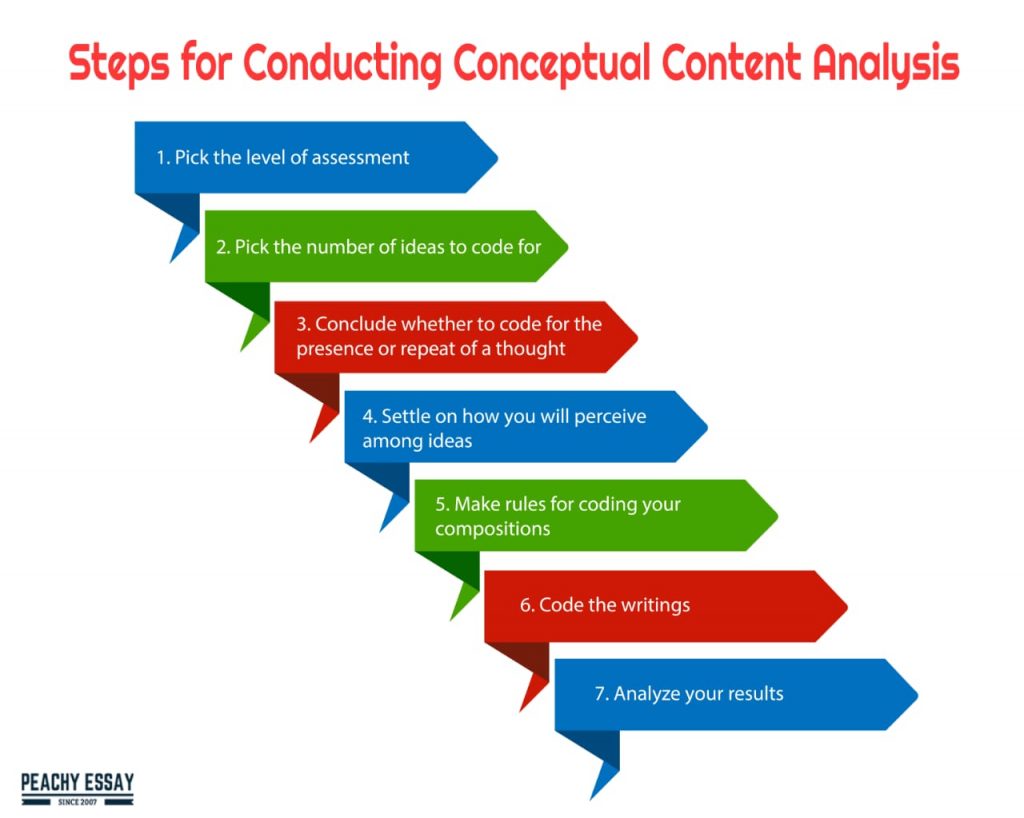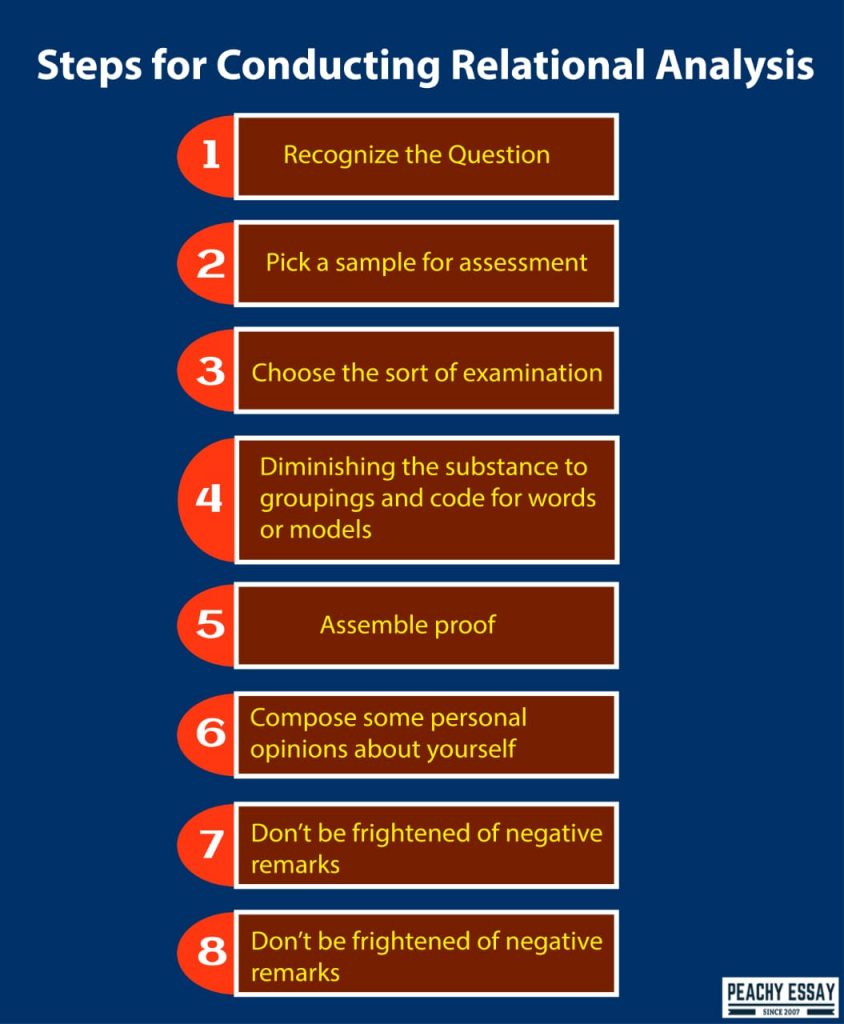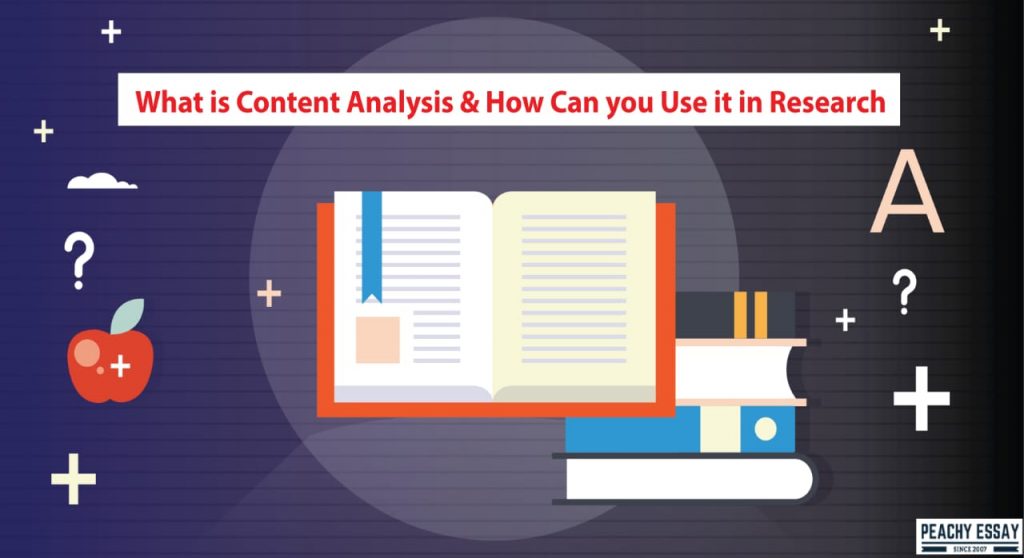Content analysis alludes to a research tool used to choose certain words or thoughts within sets of writings. Investigators gauge and examine the presence, suggestions, and associations of thoughts and words then accept the messages within the writings. Compositions can be portrayed widely using reference sources, such as books and journal articles. To do content analysis, you have to code the content into sensible classes on an arrangement of levels- word, articulation, sentence, or theme – and subsequently analyse using one of content assessment’s fundamental techniques: Relational or conceptual analysis.
Uses of Content Analysis
Since it is utilized to assess texts or recorded correspondence, content analysis is as of now used in various fields, from displaying and media studies to composing and method of talking, ethnography, and social assessments, sexual direction, and age issues, humanism and political hypothesis, mind exploration, and scholarly science.
Here are its uses
- Uncover worldwide differentiations in communication content
- Identify the propaganda
- Recognize the points, focus, or communication examples of a person, bunch, or foundation.
- Portray attitudinally and conduct responses to correspondences
- Decide whether there is passion in people or group.
Types of Content Analysis
Here are the two types of content analysis
Conceptual Analysis
People consider conceptual analysis when they are managing content assessment. In the conceptual examination, a thought is selected for appraisal, and the assessment incorporates estimating and counting its quality. The essential target is to take a look at the event of express or verifiable terms in the data. Unequivocal terms are not hard to perceive. The coding of implied terms is more jumbled: you need to pick the consequences and base choices on subjectivity. Along these lines, coding of specific terms incorporates using a word reference or setting focused translation rules or both.
To begin a conceptual assessment, concoct an examination question and select a sample for investigation. The content ought to be coded into sensible substance classes. This cycle is alluded to as selective reduction. By decreasing the substance to classes, the expert can zero in on and do the coding for unequivocal words or models that educate the examination question.
Here are the steps for conducting conceptual content analysis

Pick the level of assessment
In any case, you should choose the degree of investigation. With the clinical services talks, to continue with the model, the investigator ought to decide if coding for a singular word, for instance, “affordable,” or for groups of words or articulations, for instance, “incorporation for everybody.”
Pick the number of ideas to code for
The specialist should now pick different concepts for coding. This incorporates developing a pre-portrayed arrangement of ideas and orders. The expert ought to pick the nature of words to code; the words might be positive or negative. With this pre-portrayed number set, the investigator needs to choose how much versatility they grant themselves when coding.
Whether or not the scientist codes from this pre-described set or allows themselves to add significant classes exclude from the set as they find them in the substance ought to be answered. Choosing a particular number and set of thoughts allows an analyst to assess a book for explicit things, keeping them on task. However, introducing a coding level versatility allows new, huge material to join the coding association that could have a basic direction on one’s results.
Conclude whether to code for the presence or repeat of a thought
After a particular number and set of thoughts are picked for coding, the investigator ought to react to a key question: would they say they will code for existence or frequency? This is huge in light of the fact that it changes the coding cycle. When coding for existence, “modest” would simply be checked once, paying little heed to how every now and again it appeared. This would be a significant coding measure and would give the scientist an unimportant perspective of the substance. Regardless, the events “sensible” that appear in substance might be more trait of importance.
Settle on how you will perceive among ideas
The scientist ought to next choose, i.e., whether or not thoughts are to be coded decisively as they appear or on the off chance that they can be recorded as the equivalent despite the fact that they appear in different designs. For example, “exorbitant” may moreover appear as “cost.” The investigation requires to choose if the words mean definitely different things to them or if they are relative enough that they can be coded actually like something practically the same, i.e., “expensive words.” Following this is the need to choose the level of idea one will allow. This includes more than subtle differentiations serious or spelling, similarly with “expensive” and “extensiveness.” Identifying the implications level would allow the scientist to code for “exorbitant” yet additionally for words that construe “exorbitant.” This could fuse particular words, language, or political doublespeak, for instance, “monetarily challenging,” that the investigator picks doesn’t legitimize an alternate class yet is better tended to under the arrangement “expensive,” on account of its evident meaning of “exorbitant.”
Make rules for coding your compositions
Subsequent to considering the hypothesis of thoughts, a scientist should settle on translation choices that will allow them to streamline and arrange the coding cycle. Developing a lot of rules assists the scientist with guaranteeing that they are coding things dependably all through the substance, comparably, no matter what. In the event that an expert coded “financially challenging” as an alternate class from “expensive” in one segment, at that point coded it under the umbrella of “exorbitant” when it occurred in the accompanying entry, their data would be invalid. The interpretations drawn from that data will accordingly be invalid as well.
Code the writings
When these choices about unnecessary information are made, the accompanying stage is coding the texts. This is achieved through the hand, i.e., by examining the substance and genuinely writing thought occasions or utilizing diverse software. Coding using a computer is one of the best ways of analysis. By contributing one’s characterizations, content examination tasks can undoubtedly automate the coding cycle; dissect huge data measures, and more broad extent of compositions, quickly and adequately. However, computerization is very dependent upon the expert’s status and class advancement. With physical coding, an expert can see bumbles evidently more with no issue. A PC is only a device and can code reliant on the information it is provided with. This matter is clearest if you code for specific information, where class arranging is major for exact coding.
Analyze your results
Once coding is complete, the scientist investigates the data and tries to make whatever inductions and theories possible. Before that, the expert ought to pick how to deal with the information in the substance that isn’t coded. One’s decisions consolidate either eradicating or avoiding unwanted material or review all information as appropriate and huge. Using it to reconsider, revaluate and possibly alter one’s coding plan. In addition, given that the theoretical investigation manages just quantitative data, the arrangement and generalizability levels are irrelevant.
The expert can extrapolate the degree that the data will allow. It is achievable to see designs, for example, that is normal for significantly greater musings. Using the model from stage three, if the thought “sensible” appears to be on numerous occasions, stood out from 15 appearances of “incorporation for everyone,” by then, the expert can actually safely extrapolate that there appears, apparently, to be a more critical complement on the monetary parts of the clinical consideration plan, instead of its overall consideration for all Americans. While incredibly accommodating and amazing for giving such information when done right, it ought to be recollected that reasonable investigation is restricted by its concentration and the quantitative thought of its evaluation. To more totally explore the associations between these thoughts, one should go to the relational analysis.
Relational Analysis
The relational analysis begins like a conceptual assessment, where the thought is picked for evaluation. Be that as it may, the examination involves exploring the associations between thoughts. Singular thoughts are viewed as having no basic significance, and rather the importance is an after-effect of the associations among thoughts.
To begin a relational assessment, pick an exploration question and select an example for examination. The examination question ought to be cantered so the thought types are not entirely clear. At that point, select content for examination. Choose the substance for assessment circumspectly, and guarantee you have adequate information for a cautious examination, so results are not limited to having too wide information. Thus, the coding cycle turns out to be exorbitantly difficult and considerable to supply huge and useful results.
Here are the means for relational analysis.

Recognize the Question
The question is essential because it shows where you are going. In the absence of a good question, the thought types and decisions not completely clear are endless, and, therefore, the examination difficult to wrap up.
Pick a sample for assessment
When the question has been recognized, the expert ought to pick portions of text/talk from the speech in which Bill Clinton probably won’t have told every bit of relevant information or is plainly holding down information. For relational analysis, the fundamental idea is how much information to shield for examination.
Choose the sort of examination
When the sample has been chosen for examination, it is essential to sort out what type or kinds of associations you should investigate. Different types of relational analysis can be used to assess the associations in messages.
Diminishing the substance to groupings and code for words or models
At any rate complex level, a scientist can code only for presence. It isn’t really the situation that straightforwardness of method prompts childish results. Various assessments have adequately used this strategy. Of course, the essence of one’s specific exploration question may require further coding levels to shield more significant detail for examination.
Examine the associations between thoughts
At whatever point words are coded, the substance can be examined for the associations among the thoughts-set forward. Three thoughts expect a central part in exploring the relations among thoughts in the substance assessment. These are the strength of a relationship, an indication of the relationship, and the bearing of a relationship.
Code the associations
One of the chief differentiation between reasonable assessment and social examination is that the declarations or associations between thoughts are coded. Presently, to continue with our comprehensive model, it is crucial to take excellent thought with allocating worth to the associations with choose if the obscure words in Bill Clinton’s talk are just fillers or hold information about the clarifications he is making.
Perform Statistical Analyses
This cycle incorporates doing authentic assessments of the data you’ve coded during your social examination. This may incorporate exploring contrasts or looking for associations among the variables you’ve recognized in your assessment.
Guide out the Representations
Despite real assessment, social examination consistently prompts seeing the thoughts’ depictions and their relationship in content (or across messages) in a graphical – or map – structure. The social examination is in the like manner taught by various speculative strategies: semantic substance assessment, decision arranging, and mental models.




